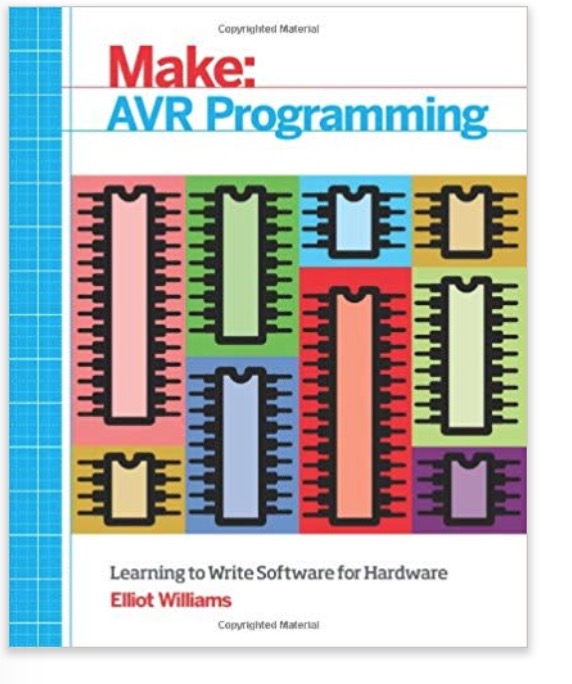Recent Posts
Programming Atmel's AVR Microcontrollers, The Chips That Power Arduino
Posted by on
Atmel's AVR microcontrollers are the chips that power the Arduino platform and are the go-to chip for many hobbyists and their hardware hacking projects.
In this book, you set aside the layers of abstraction implemented by the Arduino environment and learn how to program AVR microcontrollers instantly.
In doing so, you learn more about the chip, and you can squeeze more power and features out of it.
Each chapter of this book focuses on projects that incorporate that particular microcontroller topic.
Each project includes schematics, code, and illustrations of a working project.
- Program a range of AVR chips
- Extend and re-use other people’s code and circuits
- Interface with USB, I2C, and SPI peripheral devices
- Learn to access the full range of power and speed of the microcontroller
- Build projects including Cylon Eyes, a Square-Wave Organ, an AM Radio, a Passive Light-Sensor Alarm, Temperature Logger, and more
- Understand what's happening behind the scenes even when using the Arduino IDE
 Due Core - Arduino Compatible SAM3X8E 32bit ARM Cortex M3 Module
Due Core - Arduino Compatible SAM3X8E 32bit ARM Cortex M3 Module
The Due Core is a microcontroller board based on Arduino Due, featuring the Atmel SAM3X8E ARM Cortex-M3 CPU.
The Due Core is a compact version of the Arduino DUE. It integrates all peripherals required for the MCU, and all GPIO are connected to 2.54mm connectors. As a standard MCU core, the board has the following features:
- Compact size: All components are put on a 54 x 58mm 4-Layers PCB. All IOs are connected to a 116-pin 2.54 standard connector.
- Easy to use: All IOs are connected to 116pin 2.54 standard connector. It requires only a 5 VDC power supply to make it work.
- Stable design: High-quality 4-layer PCB layout, two 5V to 3.3V LDO onboard, one for digital and one for analog processing. Separate AVCC and AGND, to ensure optimum analog performance.
- Easy to set up the development environment: Uploading sketches through standard 6-pin UART interface, standard Micro usb connector, full use of existing resources.
- User-friendly design: Rich LED status indication, two onboard buttons, one is for MCU reset, and one is for Flash Erase. Unique jumper erase protection against the flash erased by mistake.
- Rich resources: All IOs are available for the user. The onboard I2C EEPROM is designed to compensate for the shortcomings of the standard SAM3X8E, which has no built-in EEPROM.
 Loading... Please wait...
Loading... Please wait...

